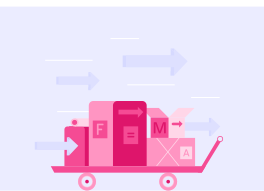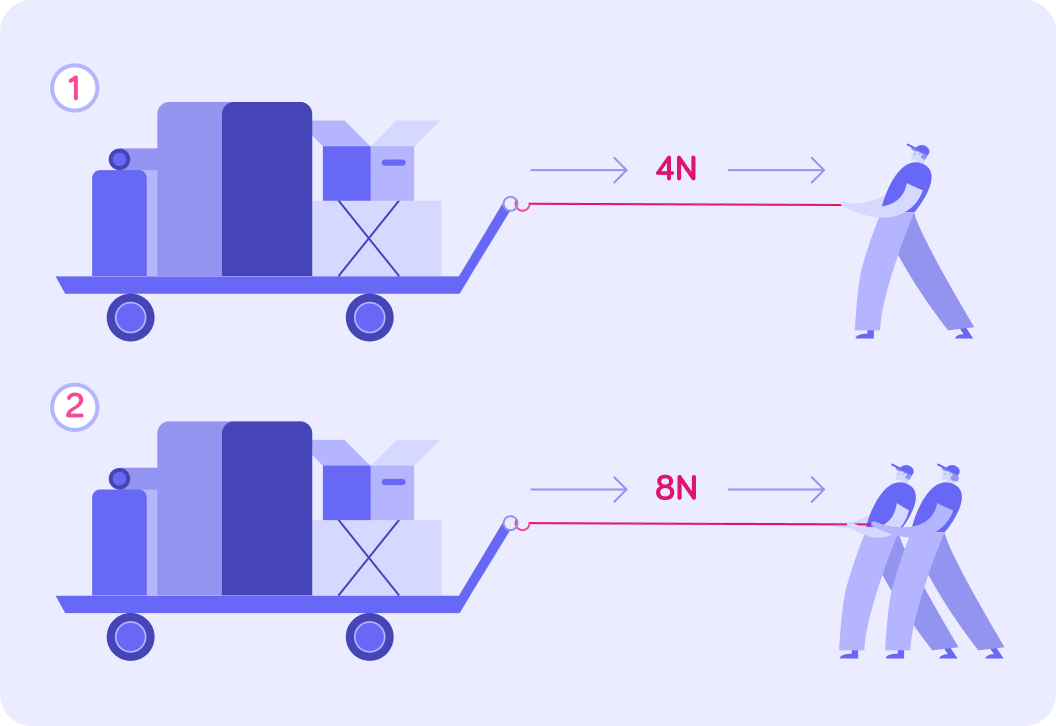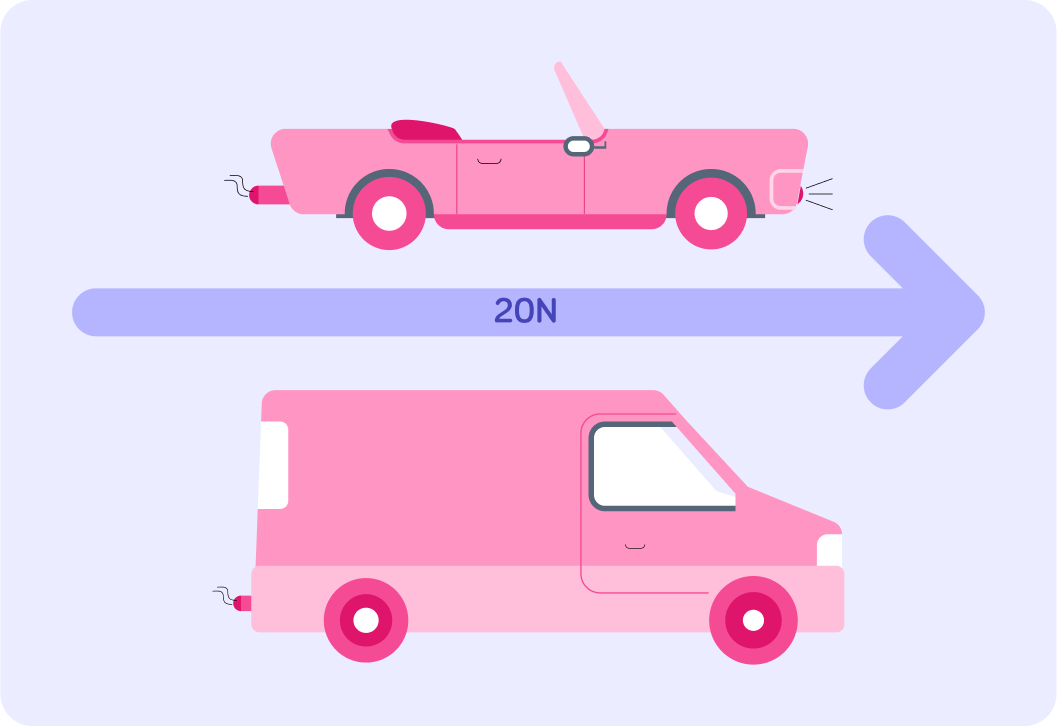YOU ARE LEARNING:
Newton's Second Law

Newton's Second Law
You will learn what Newton's Second Law is in terms of acceleration, mass and force put together into an equation.
What causes a car (or any other object) to accelerate?

Complete this sentence: Acceleration is the rate at which an object changes its ______

Try to guess, which is the correct unit of measurement to use when describing acceleration.

The first image shows a man pulling a trolley, applying an unbalanced force of 4 Newtons. Does the trolley accelerate? Answer yes or no.


The man asks a friend for help pull the trolley, so that there is now twice the amount of force applied. The acceleration of the trolley will be ...
A) the same. B) greater. C) less.


If we applied 20 Newtons of force to both the van and the car, they would both accelerate. Which would accelerate more? Answer van or car.


You have just applied Newton's second law of motion! Newton's second law states that the acceleration of an object is directly proportional to the resultant force acting on the object, and inversely proportional to the mass of the object.
In other words, if you apply more force an object accelerates more, and an object with less mass will accelerate more than an object with more mass when the same force is applied.
Newton's second law states that the acceleration of an object is directly proportional to the resultant force acting on the object. So if the force is doubled, what happens to the acceleration?

A ball with a mass of 1 kg is kicked with a force of 3 N. It accelerates at a rate of 3 m/s2 . Try to work out the formula which explains the relationship between force, mass and acceleration.

Newton's second law can be written as Force=mass×acceleration , or F=ma. To find the force, we simply multiply mass and acceleration. The formula can also be rearranged to find mass, or acceleration.
How much force is needed to cause an acceleration of 2 m/s2 on a trailer with a mass of 13 kg?

If Force=mass×acceleration , then how could you find the acceleration from a known force and mass?

If a box with a mass of 2 kg is pushed with a force of 2 N, what is its acceleration?

